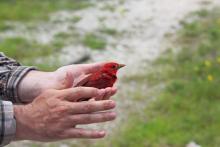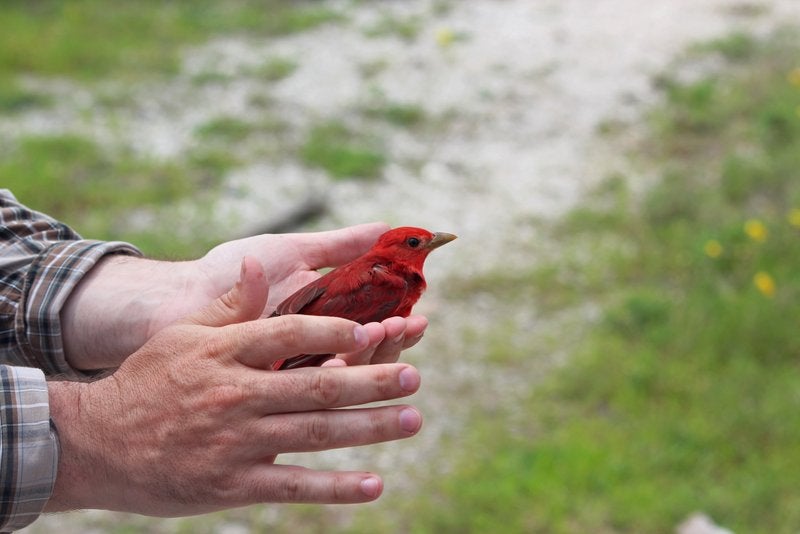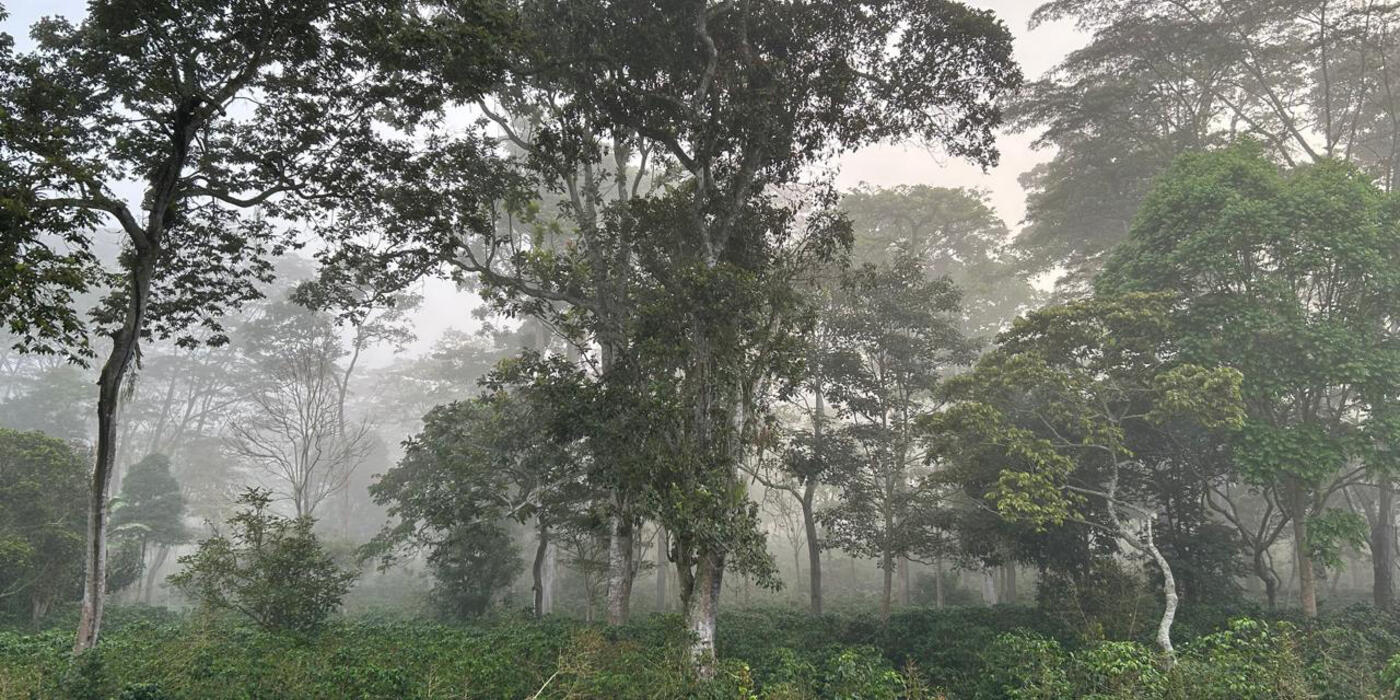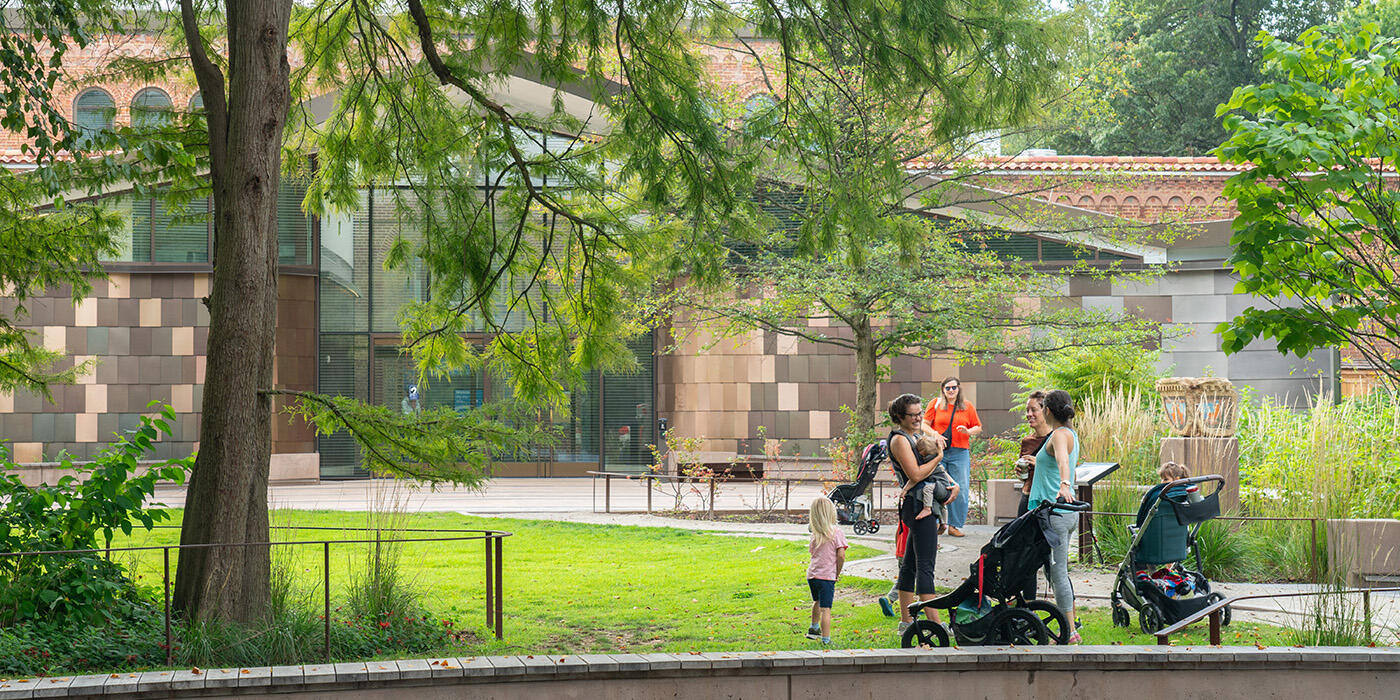Smithsonian-led Study Lays Groundwork To Uncover Role of Migration in Bird-Population Declines
Authors Identify Key Research Needs To Understand Effects of Events in Gulf of Mexico on Migratory Birds
The period of a migratory bird’s annual cycle thought to be the most perilous—its twice-annual journeys over oceans and inhospitable landscapes—is also the least understood. A new collaborative study led by the Smithsonian Migratory Bird Center (SMBC) synthesizes what is already known and outlines the key remaining questions that, once answered, will help researchers complete the picture of the effects of migrating through the critical Gulf of Mexico region on bird populations in order to protect them.
“We’re seeing declines in populations of most migratory bird species,” said Emily Cohen, lead author on the paper and SMBC research associate. “Humans are really changing the environments through which birds have evolved to make these amazing journeys, and that is likely making it more dangerous to be a migrant. Only by understanding how these changes are influencing migratory bird populations can we implement effective conservation strategies.”
The study, which was published May 3 in The Condor: Ornithological Applications, focuses specifically on coastal habitats around the Gulf of Mexico, which provide vital resources for North America’s migratory birds during migration to wintering areas in the tropics. Yet, the coastal habitats around the Gulf of Mexico are being dramatically altered by growing human populations and a changing climate.
Although all of these events may be leading to population declines of migratory birds, how and to what extent are unclear, according to the study’s authors.
“Migration is really the final frontier in terms of understanding the annual cycle of migratory birds,” Cohen said. “The good news is that we now have large-scale tools—including weather- surveillance radar, lighter-weight tracking devices and citizen collected eBird data—that can fill in these information gaps for a much more cohesive picture of bird migration through the entire Gulf of Mexico region.”
The paper is the result of a collaboration among scientists and conservationists that came about because of the 2016 Smithsonian-hosted North American Ornithological Conference. The authors call for comprehensive and collaborative Gulf-wide monitoring of migratory birds to address specific research needs, including identifying stopover habitat hotspots, assessing the threats to airspace corridors, monitoring bird use of oil platforms and determining mortality as the result of buildings, vehicles and pesticides.
“Migratory birds are a shared international treasure,” said Pete Marra, head of SMBC and a co-author on the paper. “With this essential science in hand, we’ll be able to work with decision makers, managers, landowners and the public sector to implement strategies to conserve the billions of migratory birds that move through this critical region.”
The Smithsonian received support for this work from the National Fish and Wildlife Foundation and Southern Company through the Gulf Coast Conservation Grants Program, as well as ConocoPhillips’ Global Signature Program.
The study’s additional authors are Wyle C. Barrow Jr., U.S. Geological Survey; Jeffrey J. Buler, University of Delaware; Jill Deppe, Eastern Illinois University; Andrew Farnsworth, Cornell Lab of Ornithology; Scott R. McWilliams, University of Rhode Island; David W. Mehlman, The Nature Conservancy; R. Randy Wilson, U.S. Fish and Wildlife Service; Mark S. Woodrey, Mississippi State University; and Frank R. Moore, University of Southern Mississippi.
SMBC is a part of the Smithsonian Conservation Biology Institute, which plays a leading role in the Smithsonian’s global efforts to save wildlife species from extinction and train future generations of conservationists. SCBI spearheads research programs at its headquarters in Front Royal, Va., the Smithsonian’s National Zoo in Washington, D.C., and at field research stations and training sites worldwide. SCBI scientists tackle some of today’s most complex conservation challenges by applying and sharing what they learn about animal behavior and reproduction, ecology, genetics, migration and conservation sustainability.
###
Photos: Kevin Bennett
Image Gallery








